Along Lake Erie, a Passionate Voice to Protect Birds
Kimberly Kaufman first became involved with Ohio's Black Swamp Bird Observatory (BSBO) as a passerine research technician, banding songbirds at the Observatory's main research station. She transitioned to education director in 2005, where she answered a call—personal and professional—to get people excited about birds. In 2009, Kaufman became the Observatory's executive director.
In addition to coordinating one of the country's most successful young birder programs, the Observatory organizes and hosts The Biggest Week in American Birding, a 10-day event every May timed to coincide with the peak of songbird migration in northwest Ohio. Kaufman, who is married to the birder, author, and conservationist Kenn Kaufman, says her expansive knowledge of birds and bird conservation is “completely self-taught.”
“I don't have a college degree, but it hasn't held me back,” says Kaufman, who recently joined ABC's Board of Directors. “This Observatory and I have grown up together, and the opportunities it's granted me are huge.”
Libby Sander: How did you become interested in birds?
Kimberly Kaufman: I grew up on this small farm in the middle of Ohio and spent nearly every waking moment outside. But I didn't really connect with birds until my late 20s. I was at an appointment, and outside the office they had a bird feeder. On every perch there was a beautiful American Goldfinch, all males in blazing summer plumage. I had never seen a goldfinch.
I was stunned to discover that these glorious birds—so common in Ohio—could have escaped my attention all my life. That moment changed the course of my life, and I was consumed by an intense curiosity about the natural world.
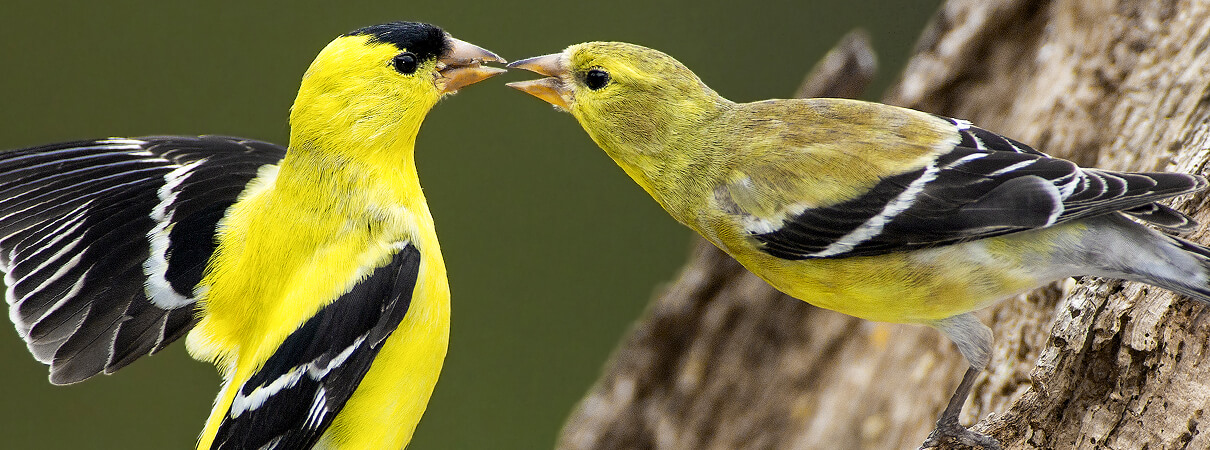
American Goldfinches, Gerald Marella/Shutterstock
LS: How did The Biggest Week begin?
KK: When the Observatory headquarters moved to Magee Marsh Wildlife Area, the leadership recognized an opportunity to promote this sensational birding destination to the world birding market, and leverage the resulting economic impact of birding tourism to build support for habitat conservation. To achieve our goals, we devised a conservation business plan that capitalized on the Observatory's strengths. The Biggest Week was a major element of the plan.
We knew the business community would play a major role in our success, so in 2008, we developed our Birds and Business Alliance program. Today, more than 70 local businesses are participating. With all the other elements of our plan in place, in 2010 we launched The Biggest Week in American Birding. The event rapidly grew into the largest birding festival in the country.
LS: Why is the Great Lakes region so critical to birds?
KK: All three of the major migratory routes birds follow during spring migration intersect over northwest Ohio. When the birds get here, they confront the daunting expanse of Lake Erie. When you're a songbird that weighs less than an ounce—and you don't swim!—you need to rest and refuel before these long crossings. With so much lakefront habitat sacrificed to development, large concentrations of migratory birds gather in these remaining patches of wooded habitat to fuel up before crossing the lake.
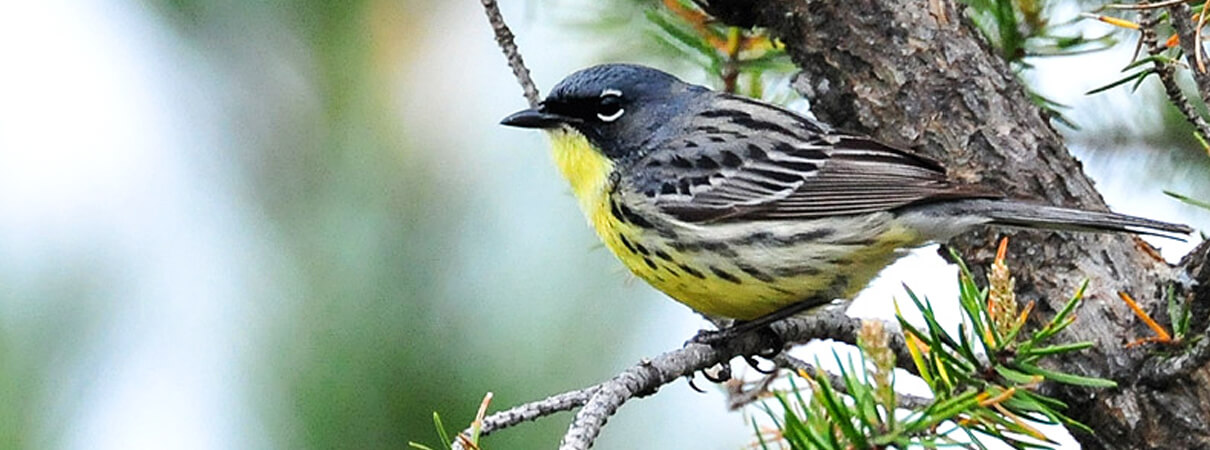
Kirtland's Warbler, Joel Trick/USFWS
These remnants of stopover habitat are the essential connection between the wintering grounds and the breeding grounds. Any loss of this habitat could have an impact on the global population of Kirtland's Warbler, Golden-winged Warbler, Wood Thrush, and other birds.
LS: What are the challenges for bird conservation in this region?
KK: Wind energy is an intense issue for us right now. With the need for alternative energy on nearly everyone's mind, there seems to be a mad rush to install as many turbines as quickly as possible. The wind industry doesn't understand the complexities of bird behavior, yet it's making decisions about whether turbines will impact birds.
The Observatory has more than 30 years of data documenting the volume of birds that pass through this region during spring and fall migration. The entire Western Basin of Lake Erie has been designated as a Globally Important Bird Area. We've brought tremendous economic development to the region through our efforts to market the sensational birding here, and a whole host of environmental agencies and organizations are on record stating that this area is not suitable for wind energy development. Yet we still can't keep turbines out. We need industry regulations—fighting these projects one at a time isn't enough.

Wood Thrush, Greg Homel/Natural Elements Productions
LS: Are there specific wind projects in Ohio that concern you?
KK: There are. With a proposed build-out of 1,700 turbines, the LEEDCo “Icebreaker” project would install six wind turbines in the open waters of Lake Erie, right smack in the middle of a Globally Important Bird Area. The Observatory partnered with ABC to submit a letter of concern about this project to the Ohio Power Siting Board, and we have evaluated—and found many flaws in—the company's assessment of the turbines' environmental impact.
We're also concerned about Ohio's largest wind energy facility, the Blue Creek Wind Farm, owned and operated by Iberdrola Renewables. Located in the flattest, emptiest landscape in all of Ohio, we've been keenly interested in the number of birds being killed at this facility. In 2013, BSBO filed a request for the facility's post-construction mortality data under the Freedom of Information Act.
LS: What did you learn?
KK: The company refuses to turn over the data, citing trade secrets. In a closed-door meeting, the company did provide a list of birds killed over a two-year period, but refused to allow us to see the study methodology. The raw data was shocking. Even in this barren landscape, where we would have expected bird morality to be low, the turbines are still killing an alarming number of birds. Forty-one species were killed at the facility in 2012 and 2013. A disturbing percentage were migrating birds such as Golden-winged Warbler, Philadelphia Vireo, and Golden-crowned Kinglet.

Golden-crowned Kinglet, Paul Reeves Photography/Shutterstock
LS: We've heard the Ohio Air National Guard at Camp Perry is resurrecting its wind turbine project. What's the story?
KK: The Air National Guard halted plans for this project last year when ABC and the Observatory threatened to sue. It was clear that the Air National Guard had not followed any of the federal guidelines intended to protect wildlife from wind energy development. Now they are apparently going through the required procedural steps and reviving the project.
LS: What has changed in the meantime?
KK: The density of nesting Bald Eagles near the proposed site has actually increased, and Sandhill Cranes—not even mentioned in the first environmental assessment—are now frequently seen in the area. This is a horrible place to put wind turbines because of the risk they pose to federally protected birds. Simply going through the process and checking the boxes should not be cause for approving projects that are bad for birds.
LS: What problems does this project raise?
KK: Remarkably, the whole purpose of this project is not to produce energy, but to test the possibility of expanding wind energy development along the south shore of Lake Erie. In order to obtain a favorable biological opinion from the U.S. Fish and Wildlife Service, the base plans to shut down the turbine at night during peak migration. But commercial wind projects are not going to cease operation for half the year during peak migration—it's economically infeasible. So how could this be a valid test?
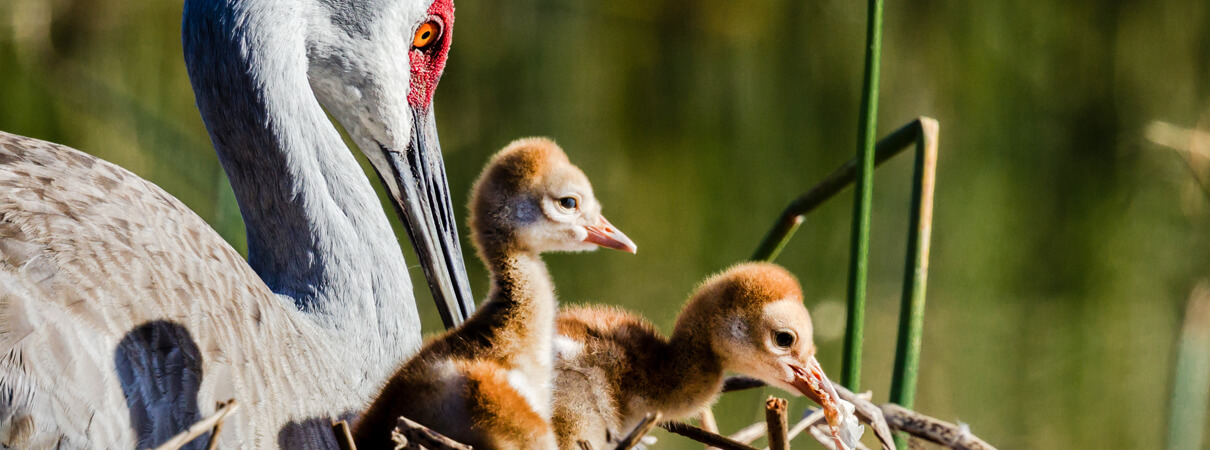
Sandhill Crane and chicks, Jo Crebbin/Shutterstock
While the wildlife agencies lack regulatory authority, they make every attempt to urge mitigation efforts. (It's the best they can hope for under the current voluntary guidelines.) Camp Perry officials have agreed to follow every suggestion the wildlife agencies recommended. On the surface, this seems like a great spirit of cooperation and a genuine interest in protecting wildlife.
However, if the entire basis for this turbine is to do a study measuring the impacts—but the turbine is never operated during the most sensitive times—the resulting study represents biased data showing little impact. As we've seen many times over the last decade, these corrupt studies are touted by the industry as proof that turbines have little impact.
LS: What is the Observatory planning to do about this?
KK: Along with ABC's Bird-Smart Wind Energy Program, we intend to review the environmental impact statement and biological opinion and provide comments to the Air National Guard, Fish and Wildlife Service, and Ohio Department of Natural Resources. ABC has submitted Freedom of Information Act requests to obtain all correspondence between these three entities and elected officials concerning the project.
We are recommending that the Air National Guard abandon this site and either move to another location much farther from the Lake, or consider an alternative, such as distributed solar on their existing buildings.
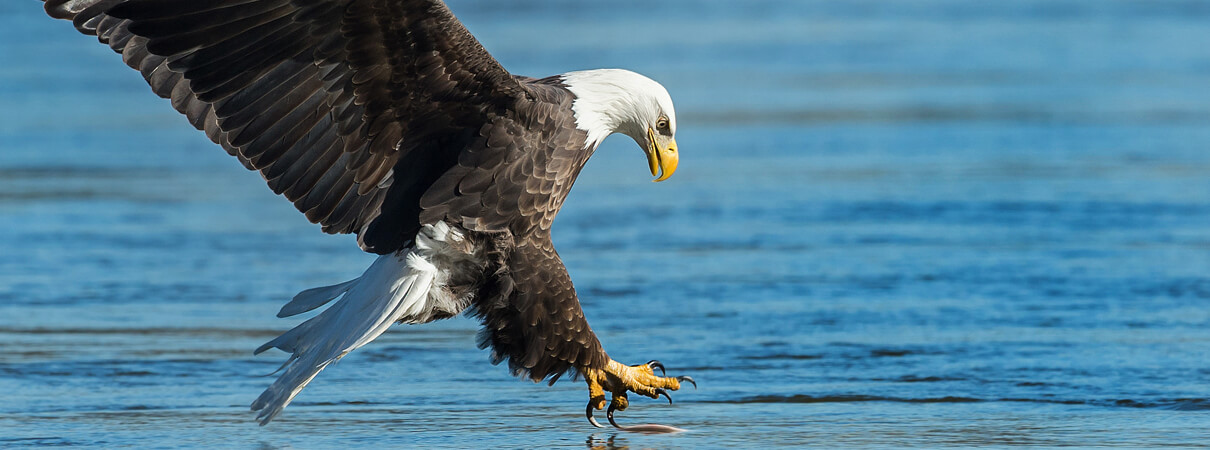
Bald Eagle, Collins93/Shutterstock
LS: These are sobering matters for anyone who loves birds. So where is your favorite place to go birding and recharge?
KK: Believe it or not, our own yard. Our little three-acre patch is an oasis in the middle of agricultural fields, and we're restoring much of it to native grasses and scrub-shrub. Watching the birds respond to the changes is powerful motivation for me to conserve and restore habitat on a larger scale.
Learn more about Black Swamp Bird Observatory's Responsible Wind Energy program.
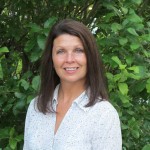 Kimberly Kaufman, Executive Director of the Black Swamp Bird Observatory, is an Ohio native and serves on ABC's Board of Directors. In addition to her work at the Observatory, she is a contributing editor to Birds & Blooms magazine and coauthor of the Kaufman Field Guide to Nature of New England (2012) and the Kaufman Field Guide to Nature of the Midwest (2015). She also serves as Vice Chair of the Ohio Bird Conservation Initiative.
Kimberly Kaufman, Executive Director of the Black Swamp Bird Observatory, is an Ohio native and serves on ABC's Board of Directors. In addition to her work at the Observatory, she is a contributing editor to Birds & Blooms magazine and coauthor of the Kaufman Field Guide to Nature of New England (2012) and the Kaufman Field Guide to Nature of the Midwest (2015). She also serves as Vice Chair of the Ohio Bird Conservation Initiative.

Libby Sander is Senior Writer and Editor at American Bird Conservancy. As a journalist, she covered a variety of beats in Chicago and Washington, D.C., writing news stories and award-winning features for The New York Times, the Washington Post, and The Chronicle of Higher Education. You can follow her on Twitter at @libsander.


















































